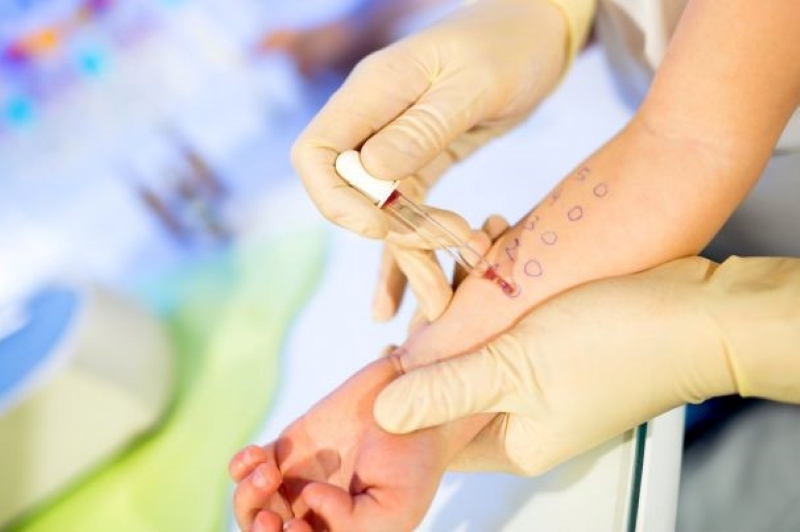
What is the prick-test and what is it for?
The prick-test is used to identify possible allergies (to food allergens or inhalants) and in particular to demonstrate the presence of immunoglobulin E specific to the allergen tested
Thanks to prick-testing, patients suffering from respiratory allergies (allergic rhinitis, asthma, conjunctivitis) or food allergies can perform allergy tests to reveal the cause of their illness, apply preventive measures and implement the most suitable therapy.
It is important that the patient undergoing prick testing is not taking antihistamine medication.
How is the prick-test performed?
The prick test method is absolutely non-invasive and painless, and is performed in a few minutes in the outpatient clinic during the allergy examination.
The skin of the area chosen for the test is usually the volar face of the forearms: more precisely 5 cm above the wrist and 3 cm below the antecubital fossa.
The skin should not be pre-treated with disinfectants or topical preparations (corticosteroids, anti-H1).
The test is performed by pricking the skin perpendicularly, without causing bleeding, through a drop of each extract, with a lancet that has a very fine tip.
A different lancet must be used for each allergen to avoid contamination between different extracts.
It is not sufficient to clean the prick-test needle every time to avoid false positives from contamination!
The minimum distance between one test and another must be at least 2.5 cm, otherwise the positive result of one test may influence the result of the neighbouring test.
Once the puncture has been performed, the allergenic solution can be removed with cotton, gauze or paper, avoiding mixing the various solutions together, so that the child can stand up if he or she wishes, or draw or be examined.
It is compulsory to perform a negative control (usually allergenic extract diluent or glycerine) and a positive control if dermographism or skin hyporeactivity is suspected.
How are the results of the prick test read?
According to most guidelines, a response to an allergen is considered positive when the prick is at least 3 mm in diameter, with no reference to the size of the histamine response.
Although there is no specific regulation on this, it is advisable that an allergy specialist or a duly trained paediatrician performs the prick test and that appropriate first aid equipment is available.
Read Also
Emergency Live Even More…Live: Download The New Free App Of Your Newspaper For IOS And Android
Respiratory Or Food Allergies: What Is The Prick Test And What Is It For?
Prick Tests: What Are They For?
Allergies In Children, Symptoms And Allergy Tests
Nickel Allergy: Symptoms, Causes, Diagnosis And Treatment
Nickel Allergy: What Objects And Foods To Avoid?
Food Allergies: Causes And Symptoms
Adverse Drug Reactions: What They Are And How To Manage Adverse Effects
Symptoms And Remedies Of Allergic Rhinitis
Allergic Conjunctivitis: Causes, Symptoms And Prevention
Allergies To Stinging Insects: Anaphylactic Reactions To Wasps, Polistines, Hornets, Bees
Food Allergies: Causes And Symptoms
When Can We Talk About Occupational Allergies?
Adverse Drug Reactions: What They Are And How To Manage Adverse Effects
Symptoms And Remedies Of Allergic Rhinitis
Allergic Conjunctivitis: Causes, Symptoms And Prevention
What Is And How To Read The Allergy Patch Test
Allergies: New Drugs And Personalised Treatment
Allergic Contact Dermatitis And Atopic Dermatitis: The Differences
Spring Arrives, Allergies Return: Tests For Diagnosis And Treatment
Symptoms And Foods To Avoid With Nickel Allergy
Contact Dermatitis: Can A Nickel Allergy Be The Cause?
Respiratory Allergies: Symptoms And Treatment
Diagnosis And Treatment Of Allergies: The Allergological Evaluation



